-
Content Count
1,362 -
Joined
-
Last visited
Content Type
Profiles
Forums
Calendar
Posts posted by John McCormack
-
-
On 7/19/2022 at 8:11 PM, Ian Vincent said:
If you have a strobe, what is the ignition advance when the engine is ticking over at 900 rpm?
I have just got my strobe back from a mate and yes, timing could have been an issue. It was set at about 3-4 deg advanced at idle. I have doubled that to about 8-10 deg advanced, similar to my other car. The engine idles better and when the rain stops I'll give it a test drive and adjust from here.
I thought it was set correctly but I must have cocked it up somewhere along the line.
-
On 7/19/2022 at 7:43 PM, BlueTR3A-5EKT said:
Might be a red herring.
What tappet clearances are you using?
The cam in my 3 A requires 0.018” inlet and 0.020” exhaust. This is very different to the standard and many other sporty cams. Would incorrect tappet clearances affect fuelling? We all know about the possible clatter of course.Yes, a good point. I have them set at .015". There isn't any significant tappet noise and she performs well.
-
On 7/19/2022 at 7:26 PM, Bfg said:
^ I was just writing in reply much the same, you posted first.

"I would have thought that one needs to identify the camshaft first. On a bench a dial-gauge would be used to measure a cam's lift and its ramps, and that would be in reference to tdc.
With the engine together and in the car I would have thought a dial gauge down onto #1 cam follower would achieve the same. From that data you may be able to identify its spec., and then inquire as to the correct timing "
However, if the engine is performing that willingly and spinning at 5000 rpm without bending a valve, nor spitting back through the carbs or inciting explosion of un-burnt fuel in the exhaust - I would doubt if its timing might also be the root cause of that much more fuel consumption.
Pete
That is also my view on cam timing. If it was out enough to impact on fuel consumption there would be other symptoms as you describe.
-
1 hour ago, Trumpy3 said:
John
If an engine or drive line component fault accounted for a 30% drop in fuel consumption, you would have signs of a failure by now (smoke, screams for mercy, etc).
Even a full race cam will not account for the high fuel rate and given the idle characteristics, I do not think you have one.
The cam can cause it, if it is not timed correctly. From my understanding, you know what is in your engine regarding head, carbs, distributor, plugs/leads, pistons, manifolds, air cleaners, exhaust system, and ancillaries. The only thing you do not know about is the cam and how it is timed.
You can get relatively good performance with incorrect cam timing depending on its profile and setting (advanced, retarded, degree).
Unfortunately, checking cam timing is not easy or accurate on an assembled and installed engine. If some one out there knows a good way then I would be interested to hear. Also as you do not know its profile, what is the correct timing?
That is the view of a very knowledgeable TR3 owner here, that the cam timing is incorrect. It is the main reason I put the post on here, to seek confirmation or rejection of this possibility.
However, I would expect that if the cam timing isn't correct it wouldn't perform as well as it does. It runs hard from 1,000 to 5,000rpm. It pulls up hills better than my other car. It is only at a 700 rpm idle that there is any lumpiness, a 900rpm idle is much better.
I don't want to remove the front of the car just to check the cam timing. As you say, I'm not even sure what the cam timing should be for this cam. If it is the cam timing I'm afraid I'll put up with poor economy.
-
14 hours ago, Lebro said:
My 2187cc TR3 with Newmans PH1 cam, 10:1 CR, worked head & "ported" can give 42 MPG if driven carefully on a long (motorway) run.
But on short local trips it's down to 28 - 35 MPG
Bob
Similar but a bit better than my short door car. I do live just 3 miles west of the Sydney centre so am in heavy traffic a lot of the time, even getting out into the country involves 10 miles of city driving.
I do try to avoid the worst of it in the long door car as it only comes out for a blast at off peak times and I don't use it for shopping runs etc. On fine days when the traffic is light I take it from my place in Leichhart over the ANZAC bridge, the Sydney Harbour Bridge and back home over the Gladesville bridge. 80km/h roads much of the way with an opportunity for a bit more here and there. Some fine views of our magnificent harbour and its bridges thrown in.
-
16 hours ago, Z320 said:
Okaaay….
How often / regular do you use your long door TR?
And what distance do you drive it before you store it again?
Do you store it with the tank filled up again?
Simple vaporisation could be the issue.
Ciao, Marco
It gets driven at least every 2 weeks. It is housed in a garage and over winter here I doubt it loses much to evaporation. Maybe a bit.
It gets filled up every couple of months, I'd prefer it to be less often.
-
11 hours ago, Tony_C said:
Yep Bob, that is exactly how it is meant to be…… and I’m sure not much is ‘legally’ going past you on the motorway!?
(how big are these Aussie Gallons?

Imperial gallons. What we used before going metric in the 70s.
-
17 hours ago, Bfg said:
Satisfyingly perplexing John

just thinking out loud. . . Surely, the fuel consumption within similar in-tune engines is commensurate with their engine capacity and compression ratio .. for any given mid-range revs, load condition, and atmospheric (air intake) condition ..irrespective of how long the valves are opened or how quickly they open or close ..as the down-stroke of the piston in the bore only draws in that capacity of mix.
In short, an i-c-engine uses let's say a 14.5 : 1 air-to-fuel mix. And if two engines are propelling the same weight, rolling resistance and aerodynamic equivalent of vehicle, at 3000 rpm, and the combustion within each engine is complete to the same percentage, then the variable is in engine capacity - which in this circumstance just 0.0116%.
And so if more fuel-air is drawn-in, as a result of a different camshaft, gas flowing (cylinder head type and manifolds) or exhaust extraction, then the vehicle will accelerate / move along faster according to how much extra air-fuel mix it intakes.. no ?
Assuming it takes exactly AB.C bhp to propel the vehicle at a steady 70mph, then the more efficient the engine is (at that particular engine speed) at converting the calorific value of the fuel to useful driving power - then the less fuel ought to be used. So what happens when one engine produces more power than another ..and your driven speed and gearing are the same.? Well simply you'd have opened the throttle less.
Different gearing will reflect as different revs for any given speed / driving condition.
My understanding is that alternative and tuning components, such as hotter camshafts, carburettors, porting, induction & exhaust systems, and even lighter engine components.. are mostly effective in regard to engine response and therefore acceleration, &/or at the extremes of engine speed.
Changes which allow the engine and mechanicals to spin with lesser friction (like needle roller rather than plain bearings) will of course aid fuel consumption, whereas things that tighten the engine up (..such as stiffer valve springs and tighter running tolerances) will slightly worsen the fuel consumption, but I wouldn't have thought as much as by half again. Most 'hot tuning' components are of little or no benefit to those of us to trundle along as if we're rural vicars-on-a-bicycle, or to those fostering fuel economy.
- - -
Fuel consumption variables may be identified . . .
- engine type, including the bore-to-stroke and compression ratios.
- engine capacity
- engine revs
- engine load ..both internally and within the drive-train, tyres etc., as well as external factors.. such as hill incline, head-on winds, etc, etc.
- engine tune including induction and ignition (reflected at the spark plug)
- engine and ancillary design for efficiency / minimal losses ..within the speed range you mostly use
- vehicle weight
- rolling resistance at any given speed
- aerodynamics at that speed
- atmospheric (air intake) conditions
- I'm sure there are others but it's still early on a monday morning !
I wonder if, although your two vehicle's rolling resistance appear the same when pushed in the garage, there's a difference in resistance within the engaged gearbox, or else something which is not apparent at garage rolling speed.. but is evident when everything is up to working temperature and spinning along at normal and faster road speeds.? I wonder if the gearbox, overdrive or differential of the long-door are particularly hot after a run.? With a freshly restored car there will be things that are notably tighter. For example, I was unpleasantly surprised by how stiff to turn a professionally rebuilt water pump was ..
Are you running similar tyres and pressures on both cars ? Is one exhaust very much more restrictive than the other ?
Otherwise it would appear that something mechanical is tighter on the long-door than you thought it to be.
..food for thought perhaps.
Pete
I had thought of the 'newness' of the long door car too. The engine and drive train have now done just over 3,000 miles.
The short door car engine has done about 100,000 miles since I put new rings and bearings in. It had been worked on before I bought it in 1976 but I don't know what was done to it. It has very good compression and oil pressure, but it is well worn in.
This I would think might account for a couple of mpg.
I do need to get the long door car on a long motorway drive to see what it does then. The short door car gets 32-33mpg on a motorway type drive.
-
1 hour ago, Z320 said:
Hi John,
both cars have / don’t have overdrive?
Ciao, Marco
Hi Marco, yes both have the same A type overdrive and 3.7 diff. I use the od the same on both cars, they both pull away at very low revs in top and od so it is useful around town as well as on the motorway.
-
13 hours ago, Motorsport Mickey said:
"long door car – stock low port head, 1 ½” SUs, 87mm pistons, half race cam, balanced. Average 18-22mpg.
Engine performs superbly. Smooth, powerful (the cam) and revs hard to 5000rpm and beyond (if I wanted to). Idle is a bit lumpy at 700rpm but will idle all day, smooth above 900rpm.
Roger explains it succinctly.
If you wanted to pin it, fill both cars up to the brim, make a note of mileometer readings and drive BOTH cars the same way sticking to speed limits and how you drive the car to get to the speed limits, AT the same time of day and air temperatures and road conditions, and put 100 miles on each car on exactly the same road, the same route (then compare the mileage on one to the other to check the speedometers are comparable on readings). Then fill the fuel tanks up again at the same petrol station and preferably at the same time, and take readings from the pumps on the variance of fuel used one to the other. The 1 1/2 SUs are having to work harder to fill up the larger 87mm bores than the 86mm with the 1 3/4 SUs for a start, you could swap the manifolds and carbs and watch the variance in mpg develop between the cars.
Having sold and engineered trucks for 40 years I often had to explain to a driver that a truck that went like a bat out of hell, but the firm and driver still complained bitterly of poor mpg, could be cured by sensitive driving still achieving the speed limits but getting there by driving within the torque range shown on the tachometer. I even cut some coloured cellophane and stuck it on the tacho within the manufacturers tachos coloured range on the dial to show a "best within" area to change gear in along with instructions. "Top of the cellophane change down a gear, bottom of the cellophane change up a gear, and DON'T floor the throttle anywhere in between" seasy !
Mick Richards
Thanks Mick. Both cars do similar drives with the short door car doing the daily errands like going to the shops etc. The big difference between the two is the cam in the long door car.
I would expect the smaller carbs to be more efficient even with the extra capacity. The intake velocity will be higher and the mixture better mixed. The bigger carbs are really only needed at high revs and, although I do drive both cars with some vigour, it spends the vast majority of the time being used more sedately.
It has been an interesting exercise getting the views of many on this fuel consumption issue. Most advice from a variety of sources tells me it will be the cam profile, and if it gives me more power I'll pay for it gladly.
-
15 hours ago, RogerH said:
Hi John,
as the cams become 'hotter' the valves stay open longer and thus allow more fuel and air in - bumps up the power.
All the 'lost MPG is being converted into BHP
The higher tickover RPM is also part of this.
Do you need such a cam???
Roge
Thanks Roger. I don't need the extra power, like Jeremy Clarkson doesn't need more power. It makes the car a great drive and I wouldn't change it to save money on petrol. It is a very spirited car to drive.
It has been noted elsewhere that engine operating temperature affects mpg. This engine does run cool at about 150degF. It won't make a significant difference, but I might put another warmer thermostat in and see if that improves the economy.
-
I own two TR2s. A short door car that has been my daily driver for 46 years. The 2nd TR2 a long door car I bought 5 years ago and restored to show condition. It has been on the road for 3 years and I've covered over 3,000 miles.
The problem is with my long door car. I’m getting very poor fuel consumption. I know TRs and can’t figure it out.
For comparison:
- short door car – stock high port head, 1 ¾” SUs, 86mm pistons, pretty stock cam. Drives very well indeed. Average 30 or so mpg.
- long door car – stock low port head, 1 ½” SUs, 87mm pistons, half race cam, balanced. Average 18-22mpg.
Engine performs superbly. Smooth, powerful (the cam) and revs hard to 5000rpm and beyond (if I wanted to). Idle is a bit lumpy at 700rpm but will idle all day, smooth above 900rpm.
Carbies aren’t running rich, lean if anything. Plugs are a bit white, I’ve just richened the mixture a flat this evening to correct.
There are no petrol leaks.
The brakes aren’t binding, I push the car around the garage and the brakes don’t get hot on a drive.
It has been suggested that cam timing might cause the poor fuel consumption. I would have expected incorrect cam timing would adversely affect engine performance.
Any ideas??
-
I've been told by a reliable source that installing a brake vacuum reservoir between the booster an engine will make a significant improvement to the PI TR6 brakes.
Any advice or experience of this modification?
-
On 7/14/2022 at 10:55 AM, Italia 227 said:
FYI, we've learned a second Italia (#94) is headed to Australia as well:
I contacted the new owner and we spoke on the phone. He has joined the TR Register and we look forward to assisting him with the restoration work. Just have to get the owner of #157 to join. From no Italias to two in two weeks, hopefully.
-
6 minutes ago, Phil Read said:
I have been studying wheel covers on 3s and have come to the conclusion what you are experiencing is common, its rare that you see one as good as the car in the picture.
This TR2 was only used from 1955 till 1966, 70,000 or so miles. I think the rigidity of the panels like the spare wheel cover are due to the very little use the car has had.
-
NoS, they might be rock hard by now.
-
14 hours ago, stuart said:
Please send my regards to Viv in return, havent seen him on here for a long time.
Interior isnt correct, it needs the side aluminium finishers that he did enquire about with me as Ive had them re-manufactured but he declined to pay what they cost. Also the boot lid needs work.
Stuart.
The boot and bonnet were open in the workshop so I didn't see it closed. Interesting that he was tight spending money on the finishers noting what he paid for the car and getting it to Australia.
Viv might be up in Sydney next week, if the car is still in the workshop we will go and have a close look.
-
21 hours ago, stuart said:
Thats the ex Anthony Hamilton car (Louis Dad) it does need work in a number of areas. I think the other car your referring to is now back in the UK.
Stuart.
Thanks Stuart, Viv Paine (vivdownunder) sends his regards.
I'd be interested to know any other areas the car could be improved.
It is the ex Hamilton car, it was the same auction he sold the two Doretti's that came from Australia. At least we got one car back.
-
I was alerted last week of an Italia being imported to Australia. A Triumph specialist workshop rang me last week that it was in his workshop, so I went over to drool.
Car number 157 was bought at last year's Silverstone auction and is now in Sydney. There may be only one other down under, nobody seems to know much about it except there may be one in Melbourne.
Yes, it has the wrong grille.
-
I have a J type in my TR6. It was doing this a few years ago.
The solenoid is also the valve for the high pressure oil that operates the overdrive. The o rings on the solenoid wear and when the oil gets hot and thin the oil bypasses the o rings and the pressure to the od drops causing it to drop out.
I have heard of people replacing the solenoid o rings, rarely successfully. I put a new solenoid in and all is perfect for the past 5,000 miles.
-
-
11 hours ago, stuart said:
Saloon fitment is like that.
Stuart.
Thanks. I have a saloon box with J type od but haven't seen that before.
-
On 5/7/2021 at 5:58 AM, rcreweread said:
Certainly looks like a saloon box with the smaller input shaft and the crossmember in the background, and fitted with what looks like an A type overdrive - strange that there are no inhibitor switches on the top cover though it looks like the reversing light one on the side has been removed so maybe a top cover has been fitted from a non overdrive box. The only other thing which looks a bit strange is the adapter plate between the OD and the gearbox which is normally aluminium. I'm sure someone told me that the works rally cars changed this alloy plate for a steel one as they had a tendency to warp/bend - the adapter plate in the photo looks thicker than an alloy one and it looks rusty indicating that its steel/iron so maybe there is a bit of strange history going on?!
Cheers Rich
It is an A type overdrive but why/how is the solenoid horizontal rather than vertical? I've never seen one like that.
-
3 hours ago, Stephen Chester said:
Hi
My TR3 had smell of petrol just after filling. Close inspection, rubber connector from tank to filler cap is deteriorating.
I also notice looking into the filler, the tank inlet and filler are not in line. This may be the cause of connecting pipe failure.
Questions: is it possible to re align the tank to match the filler?
Do I need to remove the filler to fit a new connector?
Thanks, regards
Steve
The tank filler on both my cars isn't perfectly aligned to the tank opening but they are only out a few mm. I haven't touched the filler on my daily driver since 1983 so it doesn't seem to be a problem.
Empty the tank. Undo the hose clamps for the filler hose and remove the cap and then the hose. It can be a nuisance as the hose has probably gone hard, but it will come out. You might need to do the next step to get the hose out.
Undo the four bolts holding the two tank retaining straps. Move the tank so the filler is aligned and repack under the tank to keep it there. Resecure the straps and fit a new filler hose and then the cap.
You shouldn't have to undo the fuel outlet pipe, there should be enough give in it. The bottom of the tank should only be moving a mm or two.
Be very careful. An empty fuel tank full of fumes open to the air is a highly explosive item. Don't be put off doing it but no metal tools etc near the tank opening. If you can put something over the opening that would help.


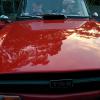
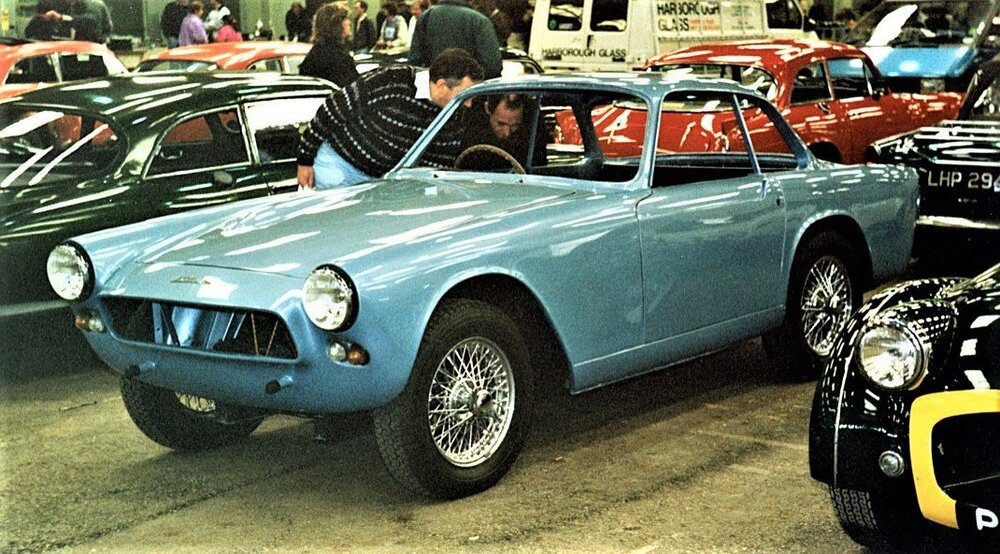
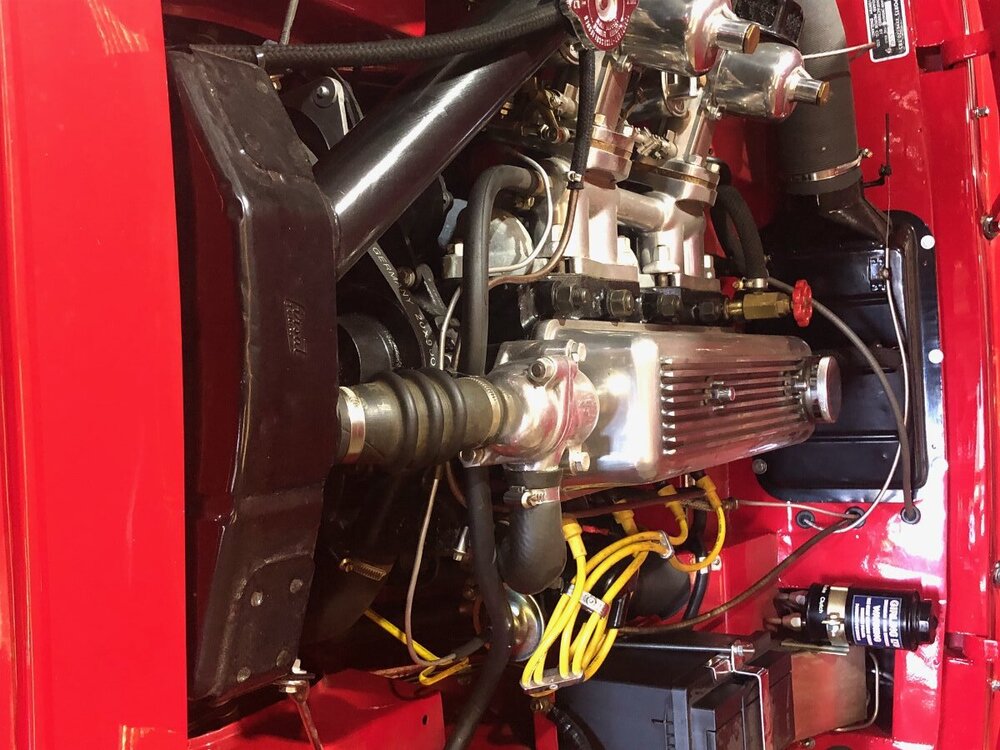
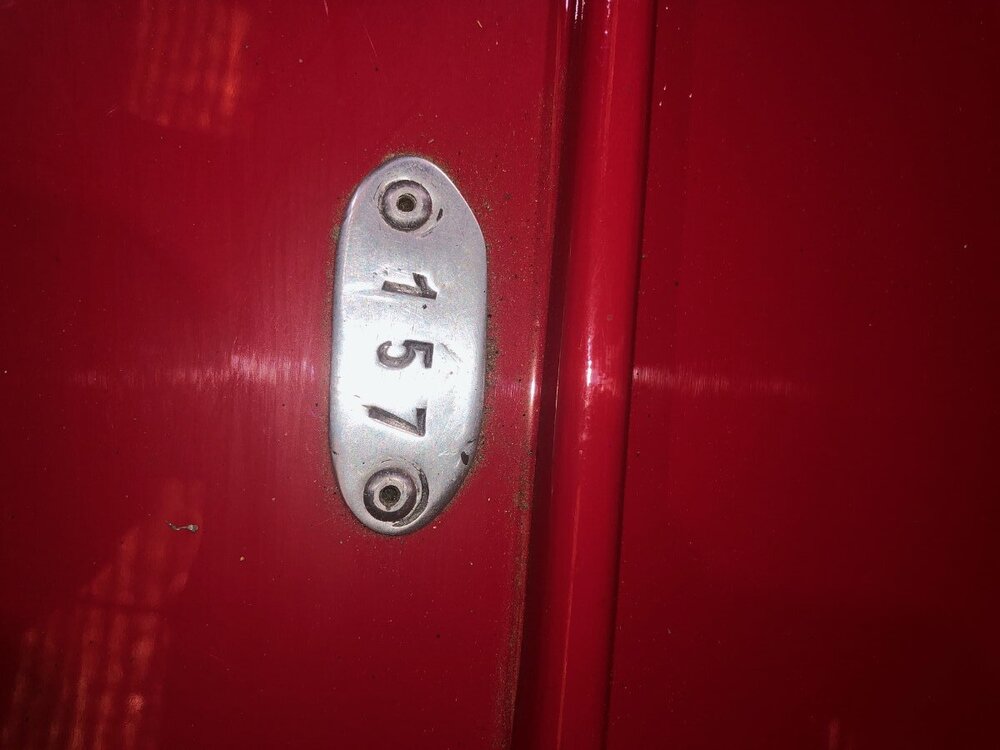
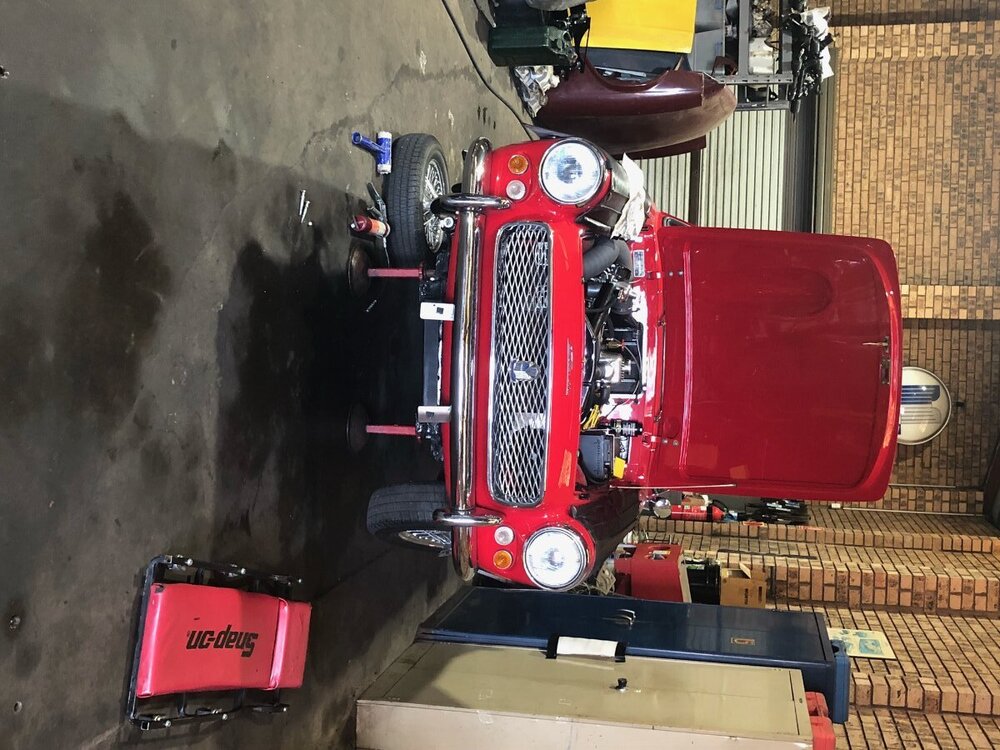
Driving in the heatwave
in TR6 Forum
Posted
We have the opposite problem. Coldest and wettest Sydney winter for a very long time. It has been very cool here, the other day it was a maximum of 9 or 10 deg C, feels like 3 according to the weather bureau. Brrrrr.
Yesterday I took my daily driver TR2 for a coffee morning with TR friends about 60kms away. Rained the whole way there and back until a few kms from home. We were the only ones silly enough to bring a TR. I did get to make improvements to the cars water proofing, at the front of the sidescreens.
Next week a dozen or so sidescreens are off for a Christmas in July tour through western NSW. It will be chilly out there and probably wet.
So enjoy your sunshine while it lasts.